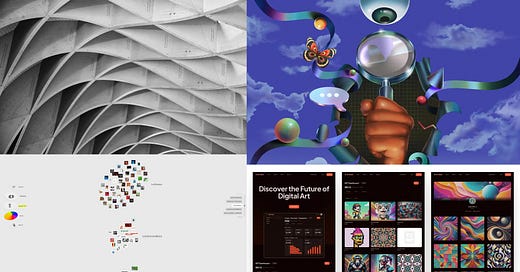Hello, dear readers! 👋
In this issue, among other things:
Valuable examples of organizing onboarding from the Headspace app
How UX designers can make it easier to use AI
How to increase long-term user engagement
How the social proof effect is used to control user choice
The manifesto of simplicity in design
Real-world examples of using AI functions in Figma
An original design startup
How to make a "liquid" scroll indicator in Figma
No-code platform for creating tactile effects for IOS and Android
…and much more!
Enjoy reading!
🗞 News and articles
The DOC edition has released a manifesto about simplicity in interface design. About why it is needed, what it is and how to achieve it.
The main theses:
Adding is always easier than shortening. Simplicity requires conscious decisions and constant rejection of excess
Simplicity should be implemented at every level — from the exterior design to the technical device. If a product looks simple but takes forever to load, it's not simple
Blindly creating screens for each function is not design. It is important to prioritize, reduce and combine
Interfaces allow you to disclose information gradually. It needs to be used
Simplicity is not minimalism, but consistency. With consistency, something can be both powerful and simple at the same time
You can't add simplicity to an already finished product. It is important to start with one main function at once and only then build up a new one around it
The text in the interface should be clear and concise. If something cannot be explained in simple words, it may be a sign of a more serious problem.
Simplicity should be both in design and in teamwork
Paz Perez has written a guide for UX designers on how to make it easier for users to communicate with AI and make it more intuitive.
Her main idea is that AI models should understand in advance the context in which they work. Then people won't have to write queries too accurately and scrupulously. Otherwise, AI models will be implemented too slowly.
Some thoughts from the article:
The task of UX designers today is to provide AI with sufficient context about the user and help it generate more accurate answers.
We have moved from graphical interfaces with visual metaphors to the natural language of communication with a computer. In the UX design of the future, the most important element will be the context window of AI
The context window is the most important part of the AI model in which it stores data for processing. You can add hints and context to it in advance, which will be hidden from the user, but will affect the answers
In the hidden settings, you can give the model safety instructions, communication tone, and other recommendations
UX designers should participate either in the training of new models or in the refinement of ready-made ones. This will help solve problems with bias, ethics, or inaccuracy of data
To increase the effectiveness of promptov, the product team must develop them according to a unified approach
The accuracy of the created prompta is achieved due to a deep understanding of the user and his attitude to working with AI
Growth Design clearly explained what the social proof effect is and how it affects user choice. Using specific examples, they showed how companies use it to increase the credibility of a company or an individual product in the eyes of the consumer and stimulate sales.
For example, they describe the halo effect, in which a positive impression of some products increases confidence in other offers of the same company.
21 UX strategies to maximize user engagement without exploitation
Taras Bakusevych told how to increase long-term user engagement while avoiding their exploitation.
Author analyzed popular behavioral design concepts such as the Hook Model and Habit Loop, identified patterns in them and proposed his own model, the Sustainable Engagement Loop. It helps to develop long-term engagement through a cyclical process of six components: triggers, motivation, action, reward, investment and progress.
In the article, Taras analyzes each of the stages and gives detailed practical advice with examples.
The six components of engagement:
Triggers are external or internal signals for action. Effective external triggers are personalized and appear at the right time to meet the user's needs and not annoy him. Internal — they force you to use the product without a reminder. For example, from boredom and fear of missing something important
Motivation is the force that makes you react to a trigger. Motivation can be both internal (personal satisfaction) and external (rewards or rewards). It is important that external and internal motivation be balanced, and the reward felt more valuable than the efforts made.
Action is the active phase of interaction with the product. It should be as intuitive and easy as possible. At this stage, it is important to focus the user on one action and encourage repeated actions to form a habit.
Reward is a reward for performing an action. Constant rewards consistently reinforce motivation, while unpredictable ones add excitement and enhance engagement.
An investment is a waste of a user's time, effort, and resources on a product that increases their attachment. The more users invest, the more interested they are in using the product
Progress is the projected path of development. Users should see how they are progressing and receive encouragement for their success
Keep reading with a 7-day free trial
Subscribe to bezier.design to keep reading this post and get 7 days of free access to the full post archives.









